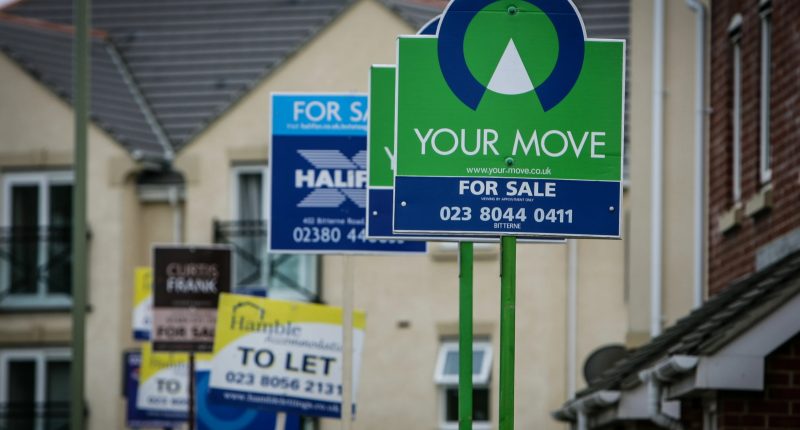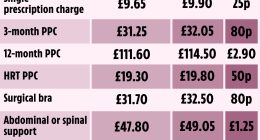LENDERS are becoming so cautious they are rejecting mortgages for increasingly “odd” reasons, according to brokers and property experts.
The list of reasons your application might be refused is growing as lenders are trying to reduce their risk during what is considered to be a rocky time for the property market.
What were once perhaps seen as quirks, such as old apartment blocks with no lift or ex-local authority homes, are now viewed as undesirable investments for mortgage lenders.
Before lenders will offer you a mortgage, they will require you to undertake a survey of the property to check it’s in good condition.
They’ll also have a valuation done to ensure the property is worth the price you’re paying for it, as they don’t want to lend more money than they’ll get back.
Jason Harris-Cohen, boss of of Open Property Group, told The Sun banks and building societies are tightening their criteria “across the board” to reduce their exposure to potentially risky properties.
“While the outlook for the year ahead is a positive one, interest rates remain at their highest since 2008,” he said.
“At the start of the year we also saw a number of lenders start to reduce mortgage rates in expectation of a base rate drop that never came.
“This will have caused some lenders to adjust just how strict their lending criteria is, particularly when it comes to ascertaining whether a property is habitable or not.
“Home buyers may well find that, in the current market, their mortgage is being rejected for some rather odd reasons.”
Most read in Money
Here, we reveal some of the top strange reasons lenders are rejecting home loan applications and what you can do about it.
Flats with no lift
An apartment in a historic block of flats was once seen as a quirky place to live.
But now it can be riddled with complications that mean lenders are keen to stay well away.
One of those reasons is the lack of a lift in the building, which is making flats on the forth floor or above un-mortgageable, affecting millions of households.
A number of major banks and building societies told The Sun they will no longer offer mortgages on high rise properties with only stairs in the building as they are becoming undesirable to an ageing population.
An estimated 42% of those living in flats – around 1.5 million households – are on the fourth storey or higher and have no lift access in their building.
Jonny Magill, chief sales officer at Purplebricks, said: “Once a flat goes above four floors, it can become tricky to sell if there’s no lift.
“Most lenders would require the building to have a lift, but it all comes down to the individual lender’s appetite for risk and other factors like location and lease length.”
If you buy a property with a lease – known as “leasehold”, this means you buy the right to live in a home for a set period of time, but don’t own the land it’s on. This tends to be more common for flats.
Leases are usually sold for a fixed number of years, for example 999 years – but some flats have very short leases, which can make them harder to sell.
Mr Harris-Cohen added: “There has been an increasing move away from flats located on the fourth floor or higher with no lift and some lenders will refuse to lend on apartment buildings over six or seven floors.”
If you want to buy a high-rise flat with no lift, consider looking at smaller or alternative lenders or focus on other aspects of the property that make it desirable.
For example, such flats in popular areas like central London are likely to sell more easily than those in smaller towns.
‘Uninhabitable’ dwellings
Property experts say more homes are being considered “uninhabitable” for issues that may not have mattered in the past.
Lenders are usually looking for a property which is structurally sound and uses a standard construction type, as well as being generally functional to live in, such as having running water.
But now there are other “grey area” reasons where homes are, in theory, completely habitable, but may be classed as “high-risk”.
“It’s these homes that can often find themselves falling into the category of uninhabitable with some lenders versus others, or in times of market uncertainty having previously secured a mortgage offer with little issue,” Mr Harris-Cohen says.
He said factors that could make a home “uninhabitable” include short leases, flood risks, wider plans for development in a given area, the property being partly commercial or the presence of invasive species such as knotweed nearby.
“Whether or not a property is weather proof will also play a part and the type of roof can be influential,” he added.
David Hollingworth, associate director at L&C Mortgages, added that homes without a kitchen – or with more than one kitchen – could also face issues.
“A second kitchen in the main property would not be typical and could therefore be flagged by valuation and affect the lending decision,” he said.
If your dream home is facing issues, it pays to have a detailed survey done to ascertain if the risks are genuinely a concern.
A good survey can either prove the home is high risk or, if it comes back clear, can be used as evidence to show to your lender.
Regular surveys, also known as Level two or three home surveys, cost a couple of hundred pounds, but a full structural survey typically costs more than £1,500, according to the Homeowners Association.
Mortgage advice firm John Charcol says your lender should let you know what needs to be done to make the home mortgage-able, if anything.
Ex-local authority homes
Homes that used to be owned by the Local Authority are increasingly raising red flags with lenders, mortgage experts told The Sun.
This means you may have fewer options to choose from when it comes to getting a mortgage.
They will look at several factors including the volume of ex-council or council-owned homes in the area, how the building is constructed, whether it is high rise and the length of the lease on the home or flat.
Mr Harris-Cohen explained: “Ex-local authority housing is perceived to lose value over time and can deter lenders.”
If you’re buying a ex-council flat in a block, lenders may also factor in how many flats in the block are privately owned.
According to John Charcol, lenders tend to want at least half of the properties in a block to be privately owned.
“While it may be discriminatory, many lenders consider a building less desirable if it’s largely occupied by council tenants rather than private owners,” the firm explained.
Spray foam insulation
As revealed by The Sun last year, a number of banks and building societies now will not lend on homes with spray foam installed.
Some lenders are automatically rejecting applications, even where the spray foam isn’t currently causing an issue.
And estate agents, brokers and surveyors all said they have seen an increase in the number of mortgage applications being rejected because of spray foam in the property.
This could make the roughly 250,000 homes with it installed virtually unsalable as potential buyers may not be able to secure a loan.
Spray foam has been in use for decades as a way of retaining heat or to stabilise a failing roof covering.
The method commonly involves spraying a liquid foam onto the inside of the roof, which then sets to form a hard layer of insulation.
However, there are risks attached as it can cause structural damage if it’s not installed correctly.
“Concerns over structural safety linked to spray foam insulation are seeing many shy away from such properties,” Mr Harris-Cohen said.
Ollie Creevy, managing director of Insulation Advisor, added: “We’ve noticed homeowners are often encountering difficulties selling their homes with spray foam insulation, and we’ve received calls from people wanting to remove it to make their homes more marketable.”
Some lenders require a full structural survey to assess whether spray foam will be an issue, so agreeing to this could mean they decide to lend if no problems arise.
Experts recommend getting professionals in to remove spray foam if you can. For a typical three-bed home this could cost anywhere between £3,000 and £4,000, Mr Creevy said.
High estate maintenance charges
Maintenance charges and ground rents on flats are nothing new, but they have been substantially increasing over time and now some flats are saddled with high fees that are making them harder to sell.
And it’s not just flats – we revealed last year how millions of new-build homes are also subject to maintenance fees which are making them less desirable to buyers.
In a CMA report released this week, it revealed 80% of homes built by the 11 biggest developers now have maintenance charges attached.
As a result, mortgage lenders view these properties as higher risk as they need to be able to sell a home quickly if something goes wrong.
Mr Hollingworth said: “Leasehold homes with big ground rents are unattractive to buyers, so banks are reluctant to lend on them.
READ MORE SUN STORIES
“Estate charges are similar to ground rent in principle, so people buying new-build houses with hefty fees could feasibly have the same issues in future.”
Before buying, it’s a good idea to thoroughly investigate any charges attached to the home and assess whether it’s affordable and if you could afford for it to increase.
How to apply for a mortgage
A mortgage is essentially a loan used to buy a house, so you’ll need to apply for one from a bank or another lender.
You can apply for a mortgage once you’ve found the house you want to buy. That way you will know how much you need to borrow.
You’ll need to save a deposit before you can get a mortgage. The average for first-time buyers is now £50,000.
However, it’s not impossible to raise the funds without the bank of mum and dad.
Lenders will also look at your credit score before they decide to lend to you, so it’s important that you’ve got a good score before you apply.
On top of this, you may also need to provide documents like utility bills, proof of benefits, your last three month’s payslips, passports and bank statements.
A mortgage application usually takes two-to-six weeks to be approved.









